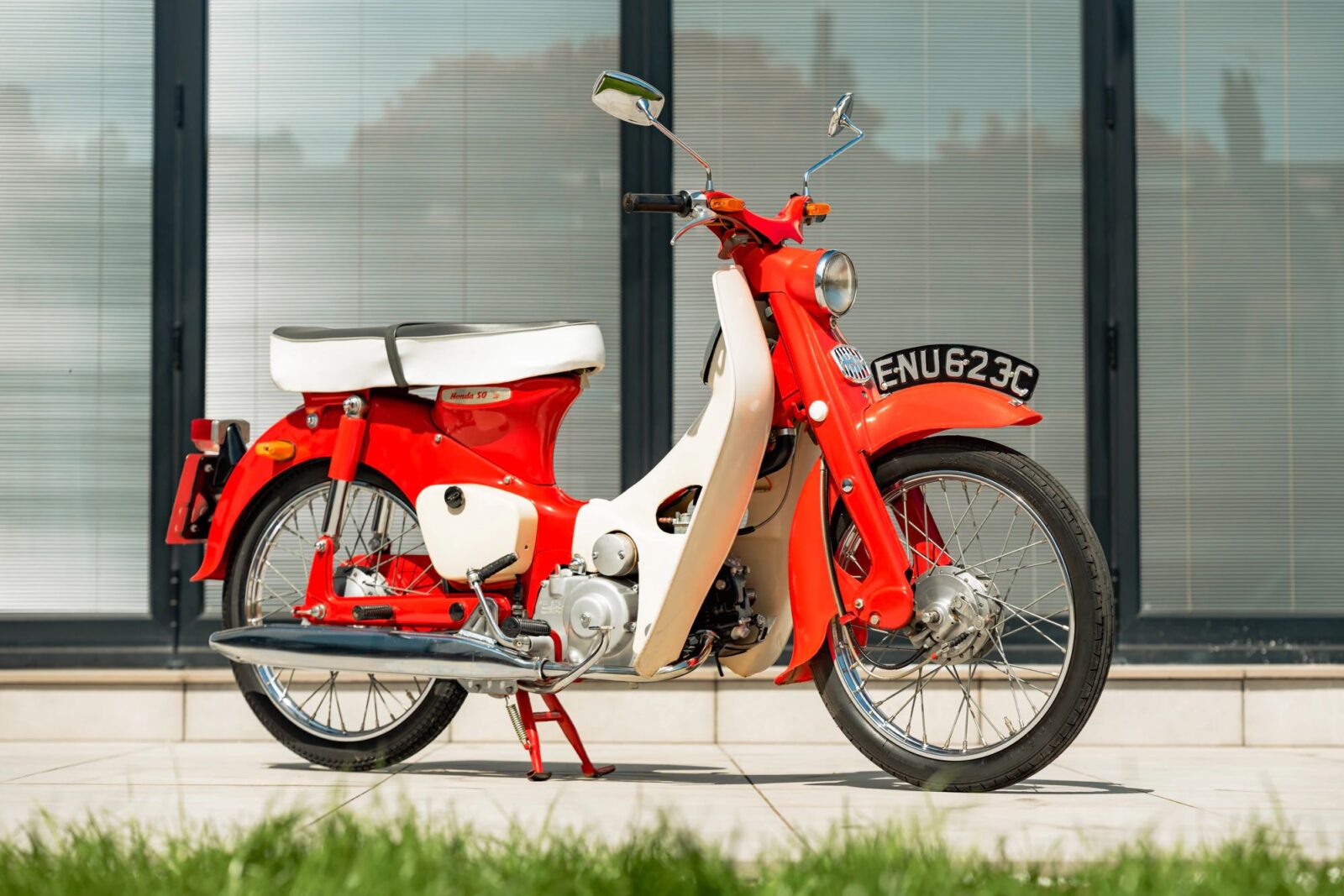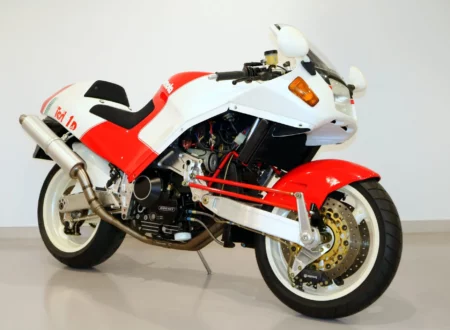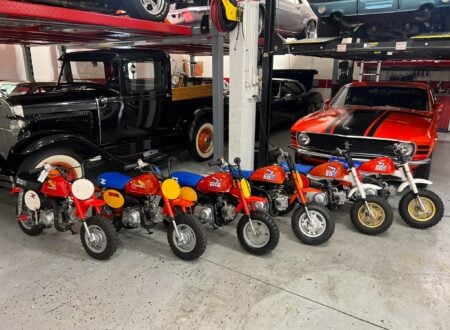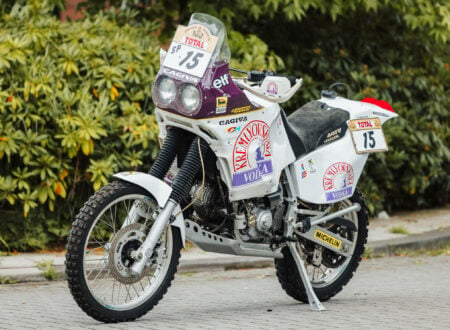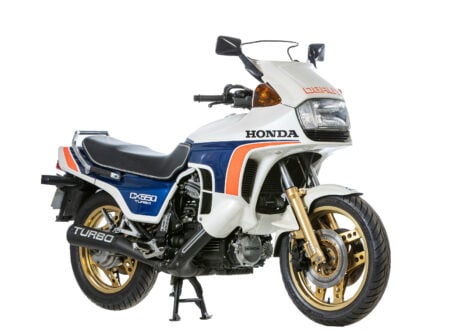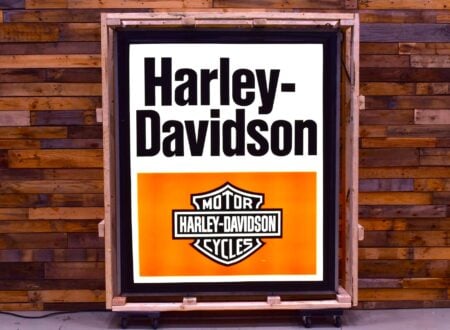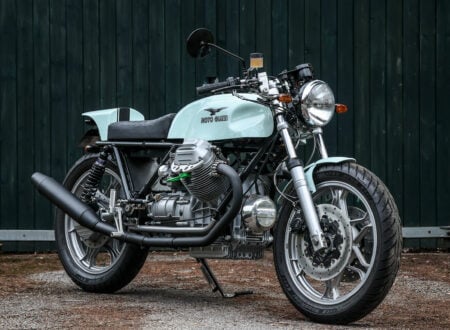The Honda Super Cub holds the record for being the single most mass-produced vehicle of any kind in world history, with over 100 million made since it debuted in 1958.
It owes much of its success to its simple design, extremely low price, and its excellent reliability. The Super Cub was bought en masse across much of the developing world, including East Asia, South East Asia, and India which combined made up the vast majority of the sales.
Fast Facts – The Honda Super Cub
- The Honda Super Cub was introduced in 1958, designed by Soichiro Honda and Takeo Fujisawa. It aimed to be a versatile and reliable motorcycle for everyday use, featuring a four-stroke, single-cylinder engine and step-through frame, which made it accessible to a wide range of riders.
- The Super Cub quickly gained popularity due to its durability, fuel efficiency, and ease of use. By the 1960s, it had become a best-seller in Japan and expanded to international markets, particularly the United States, where it was marketed with the slogan “You meet the nicest people on a Honda.”
- Over the decades, the Honda Super Cub underwent several upgrades and redesigns, including improvements in engine performance, fuel efficiency, and environmental standards. Notable models include the C50, C70, and C90, each introducing its own new features and engineering upgrades.
- The Honda Super Cub is one of the most produced motor vehicles in history, with over 100 million units manufactured as of 2017. It continues to be a symbol of reliable and affordable transportation worldwide, with modern versions still being produced and sold, retaining the classic design while incorporating contemporary engines to meet modern emissions regulations.
How The Super Cub Came To Be
The beginnings of the idea that would become the Honda Super Cub, sometimes also called the Honda Cub, came from a trip to Europe by Soichiro Honda and Takeo Fujisawa. Soichiro Honda was interested in racing, and was in Europe for the Isle of Man TT, but ever the clever businessman, Takeo Fujisawa was there to learn all he could from the more advanced state of the European motorcycle industry.
Above Video: This episode of Jay Leno’s Garage is all about the Honda Super Cub, and the closely related Honda 50. Leno offers a great breakdown of the history of the model, and you get to see and hear it in action.
Fujisawa quickly realized that they could make a small-capacity motorcycle similar to the Lambrettas and Vespas he saw on the street, but with larger wheels better suited to bumpy unsealed roads. He decided he would also need to add a plastic fairing to protect the rider from wind, dust, and splashed puddles.
A pressed steel monocoque “underbone” frame was developed on their return to Japan as it far both cheaper than a welded steel tube chassis and far faster to produce in large numbers.
One of Fujisawa’s more unusual requirements was that the new design must be able to be operated with one had while the rider carried a tray of soba noodles.
His reasoning was explained as follows: “If you can design a small motorcycle, say 50 cc with a cover to hide the engine and hoses and wires inside, I can sell it. I don’t know how many soba noodle shops there are in Japan, but I bet you that every shop will want one for deliveries.” – Takeo Fujisawa
Building The Biggest Motorcycle Factory In The World
The two men had such faith in the market for this new design both in Japan and in the West, that they had the Honda Suzuka Factory built. It would be the largest motorcycle factory on earth at the time, dwarfing anything else and taking much of its inspiration from Ford in the United States and Volkswagen in Germany – who both used large factories and the economy of scale to produce high-quality, low-cost vehicles.
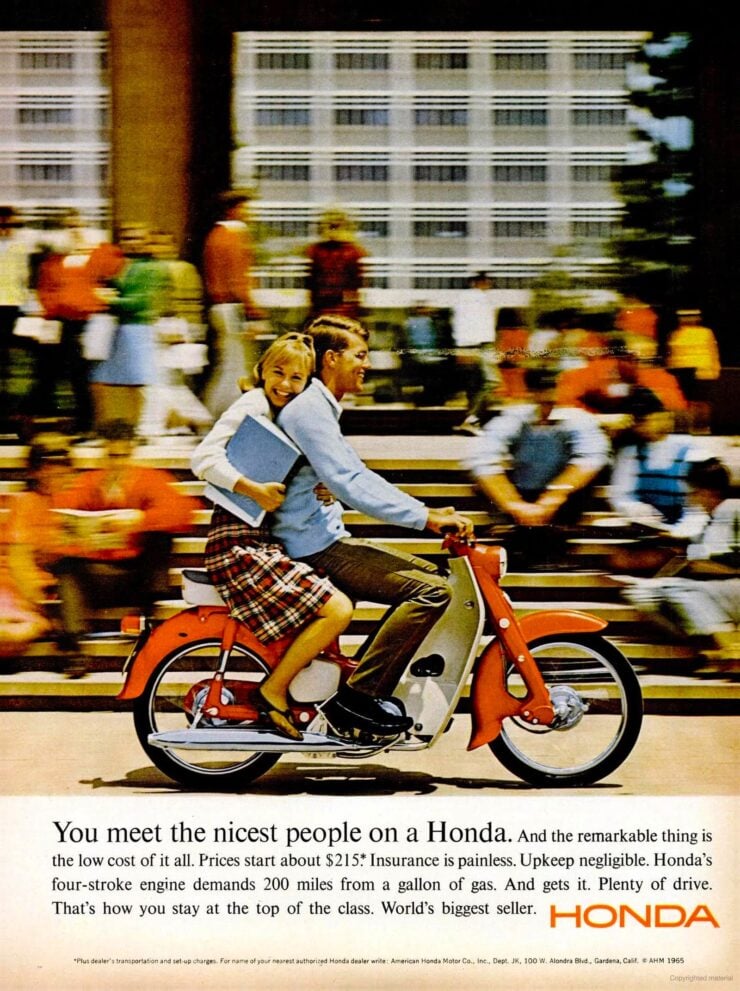

When it entered production in 1958 with its simple air-cooled, single-cylinder, four-stroke engine and affordable price tag, Honda couldn’t make enough of them to keep up with demand.
It proved a popular and low-cost form of transport in the United States long before Japanese cars achieved widespread adoption – and many have suggested that the Honda Super Cub was the vehicle that first established the reputation for affordability and reliability that Japanese cars would later enjoy.
Honda would continually update the Super Cub and improve it incrementally, always being sure to not mess with the formula too much and risk having the model lose its appeal. The model still remains in production today as the C125 Super Cub, its popularity has increased once again in recent years thanks to its retro design once again becoming stylish.
The Honda Super Cub C102 Shown Here
The motorcycle, or scooter if you prefer, shown here is a partially restored Honda Super Cub from 1965, the C102 model. The partial restoration took place in 1997, and it’s believed that the vehicle has covered 236 miles in the years since.
Not a lot is known about its history as it was bought from a deceased estate back in 2022, since which time some recommissioning has reportedly taken place. The bike is finished in the traditional colorway of red with a cream plastic fairing, and a seat with a matching cream side and a black top.
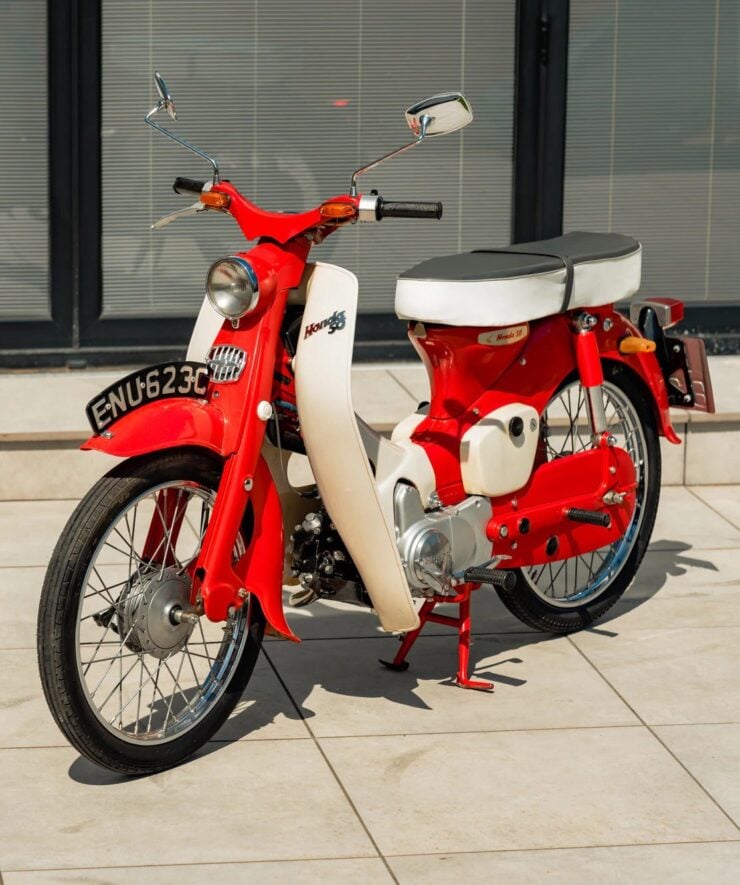

It has drum brakes front and back as you would expect, with a longitudinally-mounted front license plate and a transversely-mounted rear plate. Power is provided by a four-stroke, 49cc, single-cylinder, air-cooled engine producing 4.5 bhp. This is mated to a three-speed transmission, and it rides on a set of classic 17 inch wire wheels.
It’s now being offered for sale by Collecting Cars out of Stockton on Tees in the United Kingdom, and if you’d like to read more about it or register to bid you can visit the listing here.
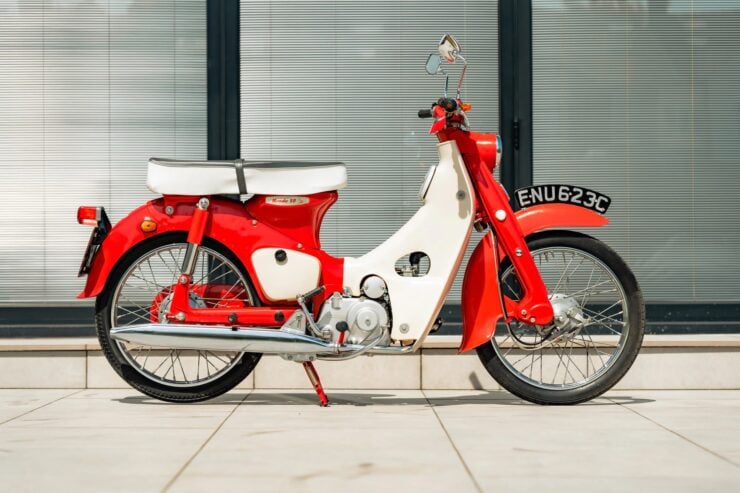
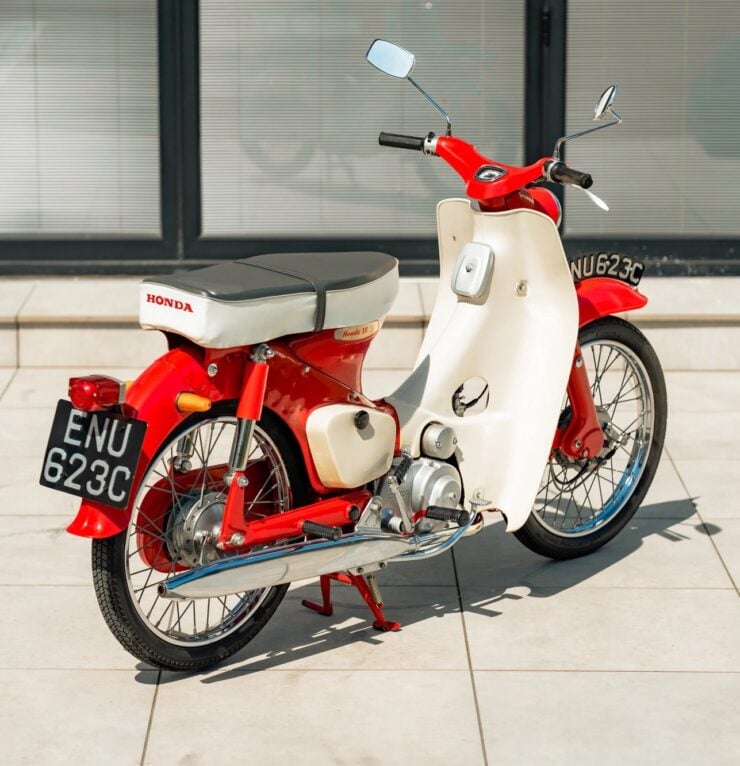
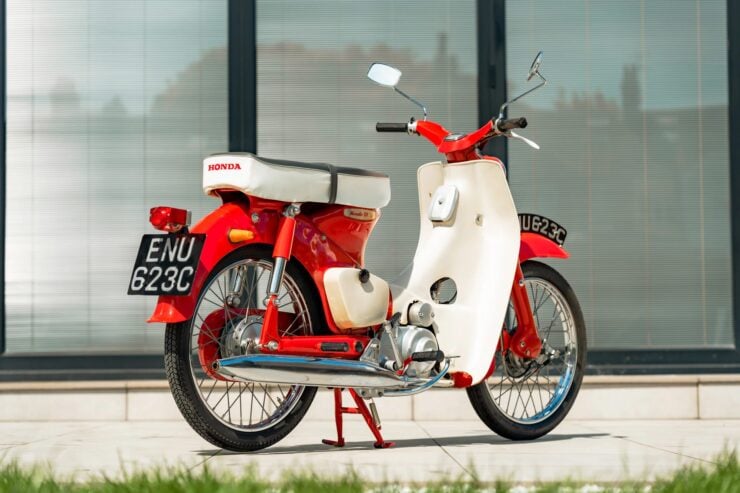
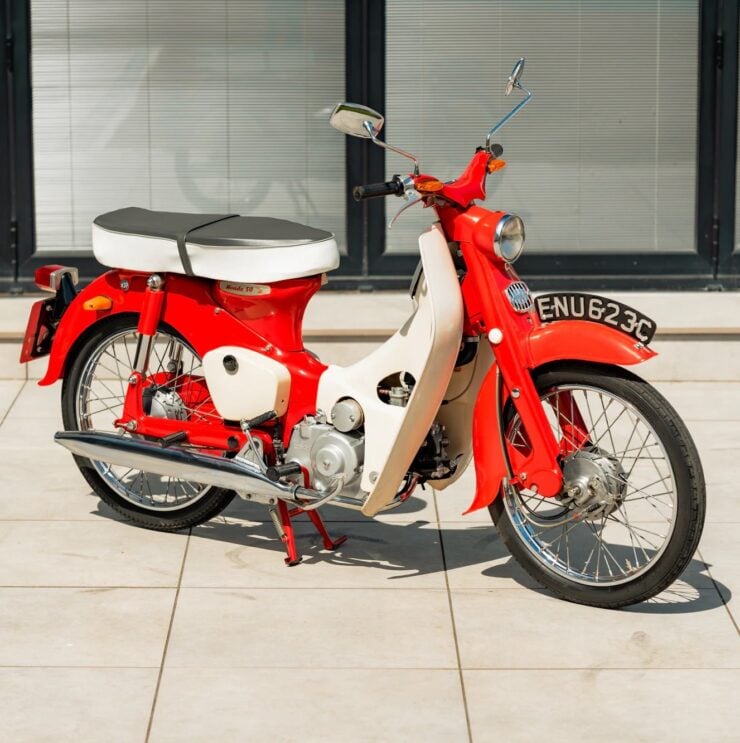
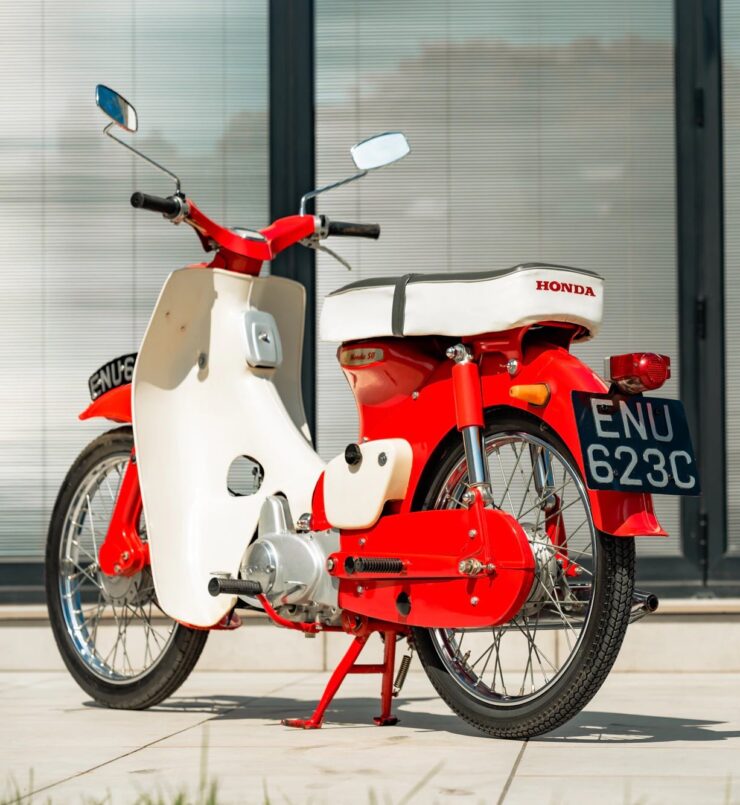
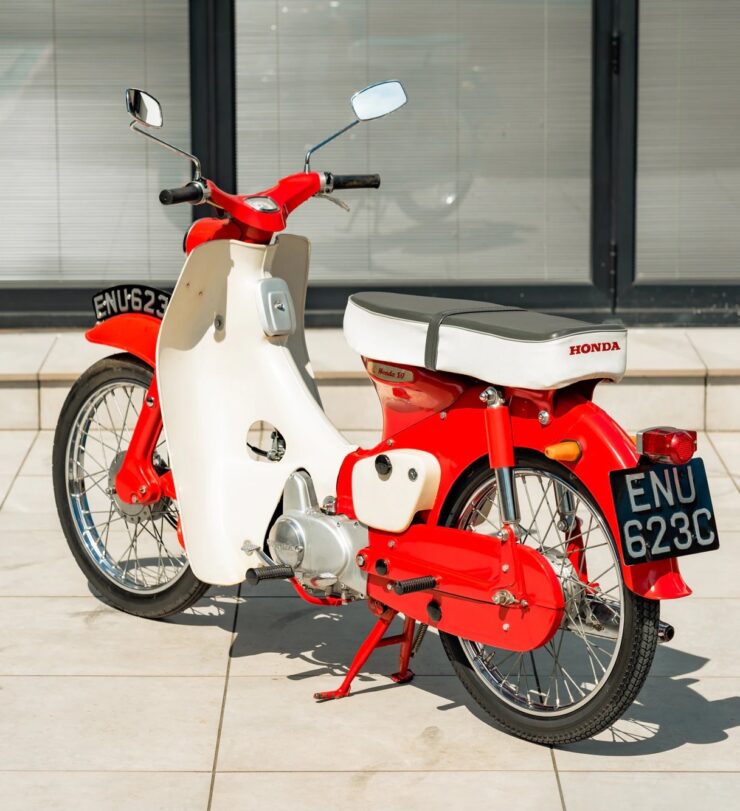
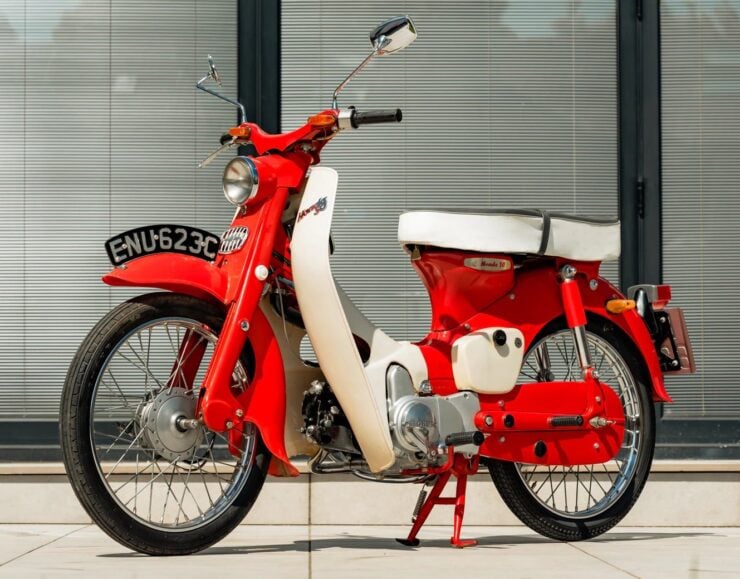
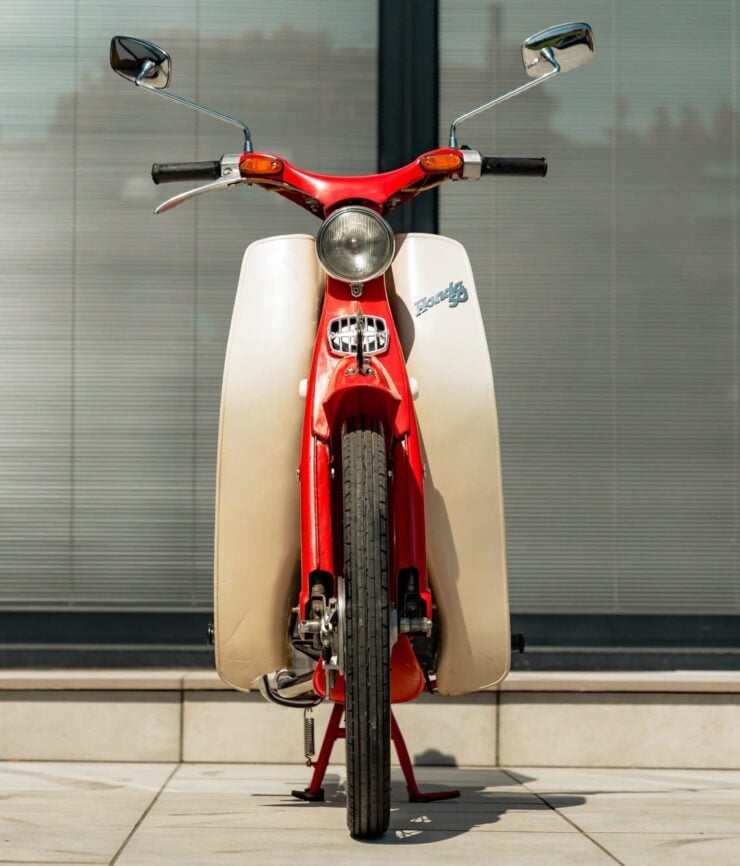
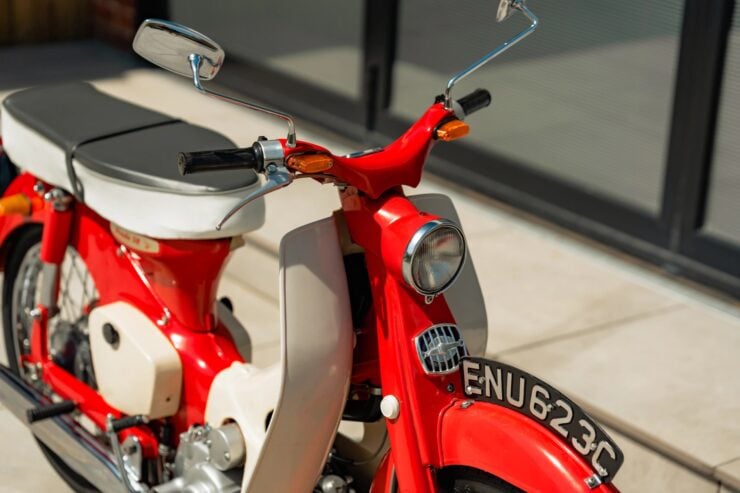
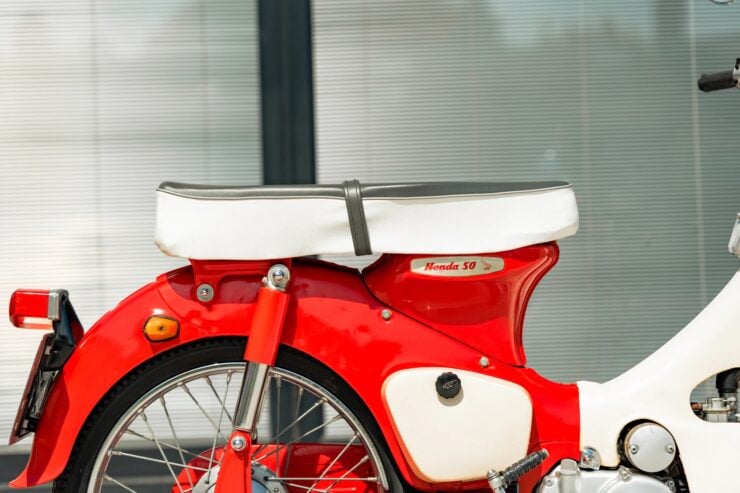
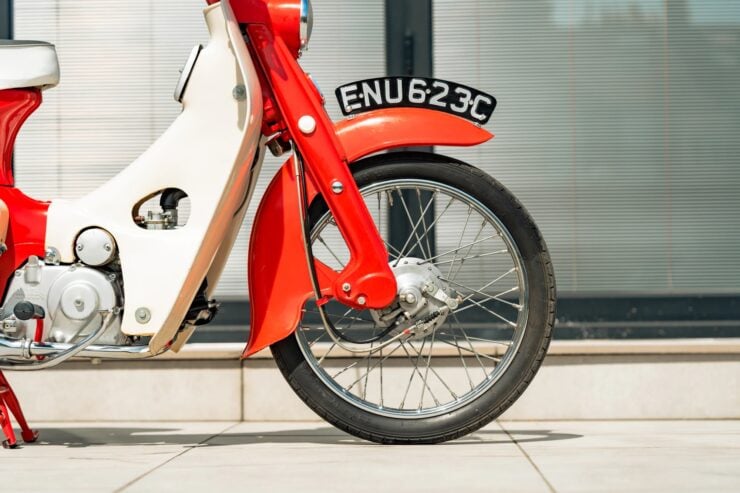
Images courtesy of Collecting Cars
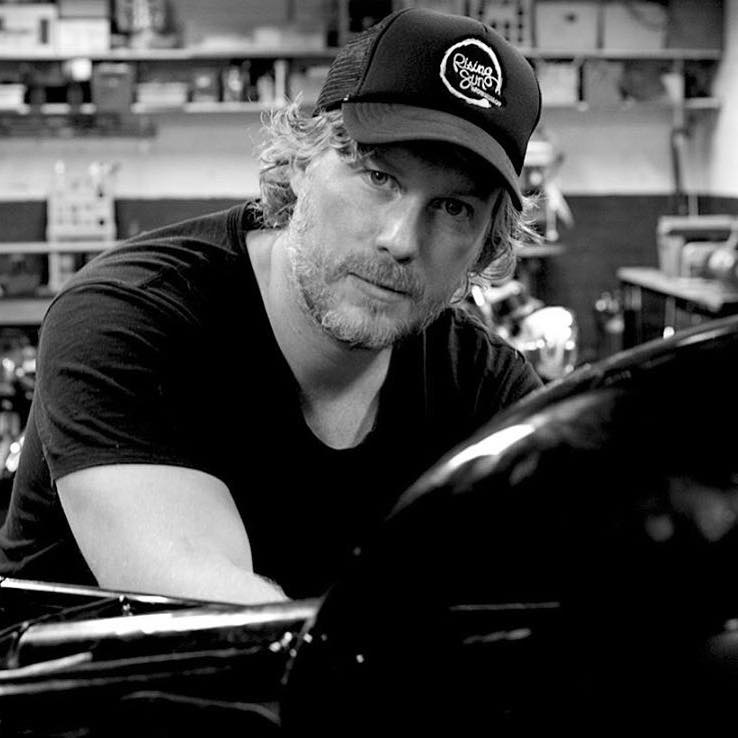
Articles that Ben has written have been covered on CNN, Popular Mechanics, Smithsonian Magazine, Road & Track Magazine, the official Pinterest blog, the official eBay Motors blog, BuzzFeed, Autoweek Magazine, Wired Magazine, Autoblog, Gear Patrol, Jalopnik, The Verge, and many more.
Silodrome was founded by Ben back in 2010, in the years since the site has grown to become a world leader in the alternative and vintage motoring sector, with well over a million monthly readers from around the world and many hundreds of thousands of followers on social media.

